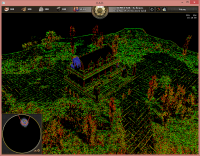
nikagra
Community Members-
Posts
20 -
Joined
-
Last visited
Everything posted by nikagra
-
I've created task for this By the way, could you please explain why such custom preprocessor is used? According to The OpenGL® Shading Language (1.10.59) spec, all directives are supported by built-in preprocessor (no #include support for to obvious reasons). I've checked Ogre3D ssource, there is no clear explanation here also
-
Initial implementation of #include directive is ready. This is only initial implementation. I'm also not sure if it works in every case (probably not) and it still has some limitations, e.g. changes in included files are not tracked by file system. Preprocessor is designed to operate on single string buffer, if we want to include another file we have to overcome this limitation. I've chosen to create deep copies of included macros and attach them and preprocessed include file to main (current processing shader) file. You can test this changes with Skirmish map type Acropolis Bay (2). I've prepared some testing shaders. Check header.glsl and edge_detection.vs What do you think? preprocessor_include_initial_impl.zip
-
#elif and #include support is quite easy to implement. #elif should be very similar to #if, to implement #include one should add contents of included file and recursively run preprocessor on it (maybe limit maximum number of include levels to prevent circular dependencies). This two should take up to 3-4 days of work Expressions in #define is a non-trivial feature. It's hard to estimate it at this point
-
I've faced some problems with GLSL preprocessor. First it doesn't allow #elif directive. This can be fixed if we stick to one SMAA quality. Another is that preprocessor returns error when it meet defines like this: #define SMAA_DEPTH_THRESHOLD (0.1 * SMAA_THRESHOLD)It reports '0' as unexpected token. There is nothing special with this define. Error is returned on each token after braces. Any ideas?
-
It seems SMAA implementation is available under liberal license (this is official repo from developers of this method) It's performed in three passes (edge detection pass, blending weights pass and neighborhood blending pass) and uses a number of precomputed textures (this texture and scripts in Python are also available) Here is another repository with demo of SMAA using OpenGL As for execution times here is citation from the paper: I'm trying to integrate this shader into the game now
-
I've made an attempt to reimplement FXAA. Implementation is basically very similar to yours and some other implementations available over Internet (e.g. at geeks3d.com) Here picture to compare results: I don't know if this results are any better then previous ones. FXAA can blur textures as it detects edges during post-processing stage and tries to smooth them all. From my perspective it still looks better than aliased.
-
Position: Programmer (Graphics, Gameplay, AI) Do you understand that Wildfire Games is a non-commercial project, work for 0 A.D. is volunteer, and work is done for free? Yes Do you agree to distribute all your work for Wildfire Games under Creative Commons Attribution Share-Alike license? Yes Name: Mikita Hradovich Email: nikagra (at) gmail (dot) com Location: Wrocław, Poland Availability: ~10h (it depends really) Age: 26 Occupation: Software Developer (Gigaset), Doctoral Study (Wrocław university of Technology) Bachelor Thesis on 3d landscape generation and some procedural techniques Skills and Experience: 4+ years of commercial programming experience, strong and deep interest in game development Motivation: I'm passionate gamer and my long-term goal is to become a game developer Personality: I'd like to challenge myself and constantly learn new things Short Essay: I've learned about 0 a.d. when it appeared on indiegogo. A few days ago I've got an email from Wildfire Games and decided to finally try to take active role in 0 a.d. development. This is a great opportunity to get gamedevelopment experience, to learn more about game engine architecture, to participate in real game and to meet passionate gamers and developers like me Interests and Hobbies: Computer science and programming, gaming and gamedev, sci fi (books, movies), astronomy Staff: No Community: Reddit Favorite Game: Witcher 3, Skyrim, Crusader Kings 2, Age of Empires 2, Cossacs, Assassin's Creed series, list goes on... Work Examples: C++ developer in Nokia Networks (2 years)


